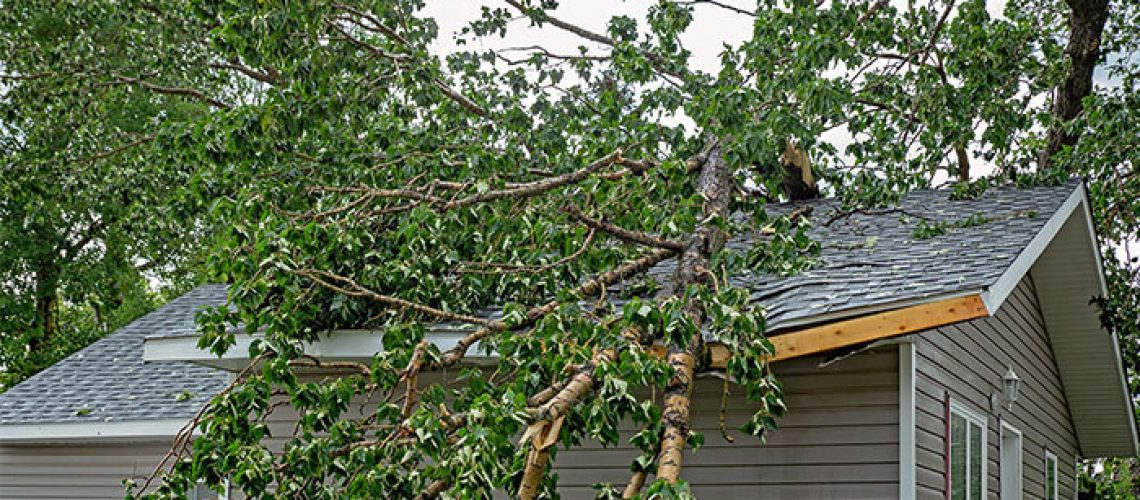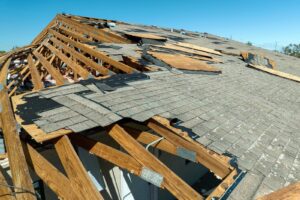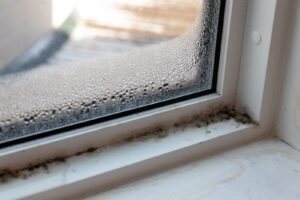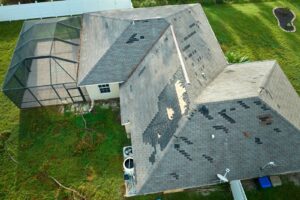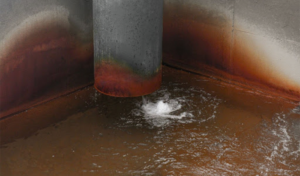In the wake of a devastating storm, the aftermath of storm damage can be a sight that leaves you stunned and overwhelmed.
The destructive force of nature can wreak havoc on your surroundings, leaving behind a landscape marked by the unmistakable scars of storm damage. Broken windows, fallen trees, damaged roofs, and flooded basements paint a stark picture of the challenges ahead.
Surveying the aftermath of a powerful storm can be a disheartening and intimidating experience. The once-familiar sights of your home or property now bear the unmistakable signs of the unleashed power of a storm. It is crucial to remain calm and focused during this time.
While it can be a tough situation, reacting swiftly and methodically is essential for preserving your property and ensuring the safety of yourself and those around you.
In this guide, we will walk you through the crucial steps to take right after a storm, equipping you with the knowledge and know-how to tackle storm damage and clean up head-on.
The order that these steps are taken will vary depending on your specific situation, and so we recommend that you seek the guidance of storm restoration professionals as you go through the process.
1. Ensure Safety
In the aftermath of a storm, prioritizing safety is of utmost importance. The immediate aftermath can be precarious, with potential hazards and risks lurking amidst the storm damage. It is crucial to take necessary precautions to protect yourself and those around you.
As you begin the recovery process, it is essential to assess the immediate surroundings for any imminent dangers. Keep a watchful eye for downed power lines, unstable structures, or debris that may pose significant risks. Maintaining a safe distance and avoiding contact until professionals have inspected and addressed these hazards is crucial for your safety.
Look for signs of damage, such as cracks, leaning walls, or compromised foundations. If you notice any structural concerns, it is imperative to evacuate the premises and seek assistance from qualified professionals before reentering the building.
2. Document the Damage
Before you start the storm damage clean-up process, make sure that you document the extent of the storm damage. By thoroughly documenting the damage, you can provide valuable evidence for insurance purposes and establish a comprehensive record that can guide the restoration process.
Take detailed photographs or videos of both the interior and exterior of your property. Start by capturing an overview of the entire affected area, highlighting the widespread impact of the storm. Then, focus on specific damaged areas, ensuring that the images clearly depict the extent of the destruction.
Pay close attention to structural damage, fallen trees, waterlogged spaces, and any other visible signs of harm caused by the storm.
Accompany your visual documentation with written notes that describe the damage in detail. Include information such as the date and time of the storm, specific areas affected, and the nature of the damage observed.
Be as specific as possible to ensure accuracy in your records, as this written documentation will serve as a valuable reference point when communicating with insurance adjusters and restoration professionals.
While documenting the property, don’t forget to record the damage sustained by your belongings as well.
Create a comprehensive inventory of damaged items, noting their condition and approximate value. Include as much detail as possible, including descriptions, brand names, model numbers, and purchase dates. This inventory will assist in the insurance claim process.
3. Secure the Property
Securing your property after storm damage is crucial to prevent further harm and protect it from potential risks. By taking proactive measures to secure the property, you can minimize additional damage and maintain a safe environment. Here are some steps to help you secure your property effectively:
- Cover Openings and Broken Windows: Inspect your property for any openings or broken windows caused by the storm. Cover them with tarps, plywood, or other suitable materials to prevent further water intrusion, potential theft, or damage from elements like wind or debris. Securing these openings will help safeguard the interior of your property and minimize the risk of further destruction.
- Clear Debris and Fallen Branches: Assess the surroundings of your property for any fallen branches, debris, or other objects that may pose a hazard. Remove them carefully to create a safer environment both for yourself and for any restoration professionals who may need access to the property. Clearing the area will also make it easier to assess the extent of the damage and begin the restoration process.
- Lock and Secure Access Points: Ensure all doors, windows, and other access points are properly locked and secured. This will help prevent unauthorized entry and potential theft during the recovery phase if you have to find temporary shelter. Consider reinforcing weak or damaged entry points to enhance security and deter any intrusions.
4. Contact Your Insurance
First and foremost, it is important to review your insurance policy before contacting your insurance. Take the time to carefully read through the policy, familiarizing yourself with the coverage details, deductibles, and any specific requirements or limitations.
By understanding the terms of your policy, you will be better equipped to communicate effectively with your insurer and provide accurate information during the claims process.
Once you have a good grasp of your policy, gather all the necessary information before contacting your insurance provider.
This includes details such as the date and time of the storm, a thorough description of the damage incurred, and any supporting documentation, such as photographs or videos. Having this information readily available will streamline the claims process and ensure that you can provide clear and concise information to your insurance company.
When you make the call, be prepared to provide a detailed account of the damage and answer any questions the insurance representative may have.
Take notes during the conversation, including the name of the representative you spoke with, their contact information, and a summary of the discussion. This will serve as a valuable reference point throughout the claims process.
The insurance representative may ask for more information or documentation that needs to be gathered.
It is important to remember that the claims process may take time, especially if widespread storm damage has occurred. Stay patient and keep records of all communication and correspondence with your insurance company. Be proactive in following up on the progress of your claim, and don’t hesitate to ask for clarification or additional information as needed.
5. Contact a Restoration Company
A reputable restoration company will have the expertise, experience, and resources to handle the restoration process efficiently and effectively. Contacting a restoration company early on allows them to promptly evaluate the extent of the damage, develop a comprehensive restoration plan, and initiate mitigation efforts to prevent further deterioration.
In some cases, contacting a professional restoration company may be the first thing you should do after experiencing storm damage.
Their knowledge and specialized equipment will ensure that your property is restored to its pre-storm condition in a timely manner, providing you with peace of mind during the storm damage clean-up process.
6. Prioritize Essential Repairs
Prioritizing essential storm damage repairs is a crucial step in the aftermath of storm damage to ensure the safety and functionality of your property. After consulting with professionals and conducting a thorough assessment of the damage, it is important to prioritize repairs based on urgency and significance.
Focus on addressing critical issues such as structural damage, water infiltration, or electrical hazards that pose immediate risks. By prioritizing essential repairs, you can create a secure and habitable environment, preventing further damage and setting the foundation for a successful restoration process.
Additionally, addressing critical storm damage repairs early on can help minimize potential long-term consequences and mitigate the storm’s impact on your property.
7. Protect Your Belongings
Protecting your belongings is essential in the aftermath of storm damage to prevent further loss and preserve cherished possessions. Take immediate action to safeguard your belongings by moving salvageable items to a safe location within your property or elsewhere.
Mitigate water damage by extracting water, drying out affected areas, and separating wet items. Cover furniture and other vulnerable belongings with tarps or plastic covers to shield them from additional moisture or debris. By prioritizing the protection of your belongings, you can mitigate further damage and increase the chances of salvaging cherished items.
8. Seek Temporary Shelter
If your home is uninhabitable, it’s essential to seek alternative accommodations. Reach out to family or friends who may be able to provide a temporary place to stay. Additionally, explore options such as hotels, motels, vacation rentals, or local shelters.
Contacting local emergency services or authorities can also provide guidance in finding suitable temporary housing. Prioritize your safety and comfort during this time and coordinate with your insurance company to explore coverage options for temporary accommodations.
9. Keep Track of Expenses
It is crucial to keep track of all expenses related to storm damage and the subsequent restoration process. Maintain a detailed record of any costs incurred, including repair and replacement expenses, temporary housing, transportation, and anything else relevant.
This documentation will be valuable when filing insurance claims and can help ensure you are properly reimbursed for eligible expenses. Remember to save receipts, invoices, and any other supporting documents as evidence of your expenditures.
10. Stay Patient and Persistent
Dealing with storm damage and its aftermath can be a challenging and time-consuming process. It is important to remain patient and persistent throughout the recovery journey. Understand that restoration and storm damage repairs may take time, especially if the damage is widespread or resources are limited.
Regularly communicate with your insurance provider, restoration professionals, and other relevant parties, seeking updates and clarification when needed. By maintaining a positive attitude, staying organized, and advocating for yourself, you can navigate the recovery process more effectively and ensure your property is restored to its pre-storm condition.
Reclaim Your Home With Restoremasters
At Restoremasters, we understand the urgency and stress that can accompany storm damage. That’s why we’re here to provide comprehensive and reliable storm damage restoration services. When disaster strikes, it’s crucial to act swiftly to minimize further damage and ensure a smooth recovery process.
Our experienced team of restoration professionals is equipped with the knowledge, skills, and state-of-the-art tools necessary to handle all aspects of storm damage restoration.
Whether your property has suffered from flooding, roof damage, structural issues, or other storm-related challenges, we have the expertise to assess the damage, develop a customized restoration plan, and execute it with precision.
When you reach out to Restoremasters, you can expect a prompt response and a thorough evaluation of your storm-damaged property. Our specialists will conduct a comprehensive assessment to identify all areas requiring attention. We’ll work closely with you, taking the time to understand your unique needs and concerns.
Don’t delay any longer. Take control of the situation and regain control of your property. Contact Restoremasters today at 801-446-6727 and let us be your trusted partner in storm damage restoration. Together, we’ll bring your property back to life and help you move forward.

